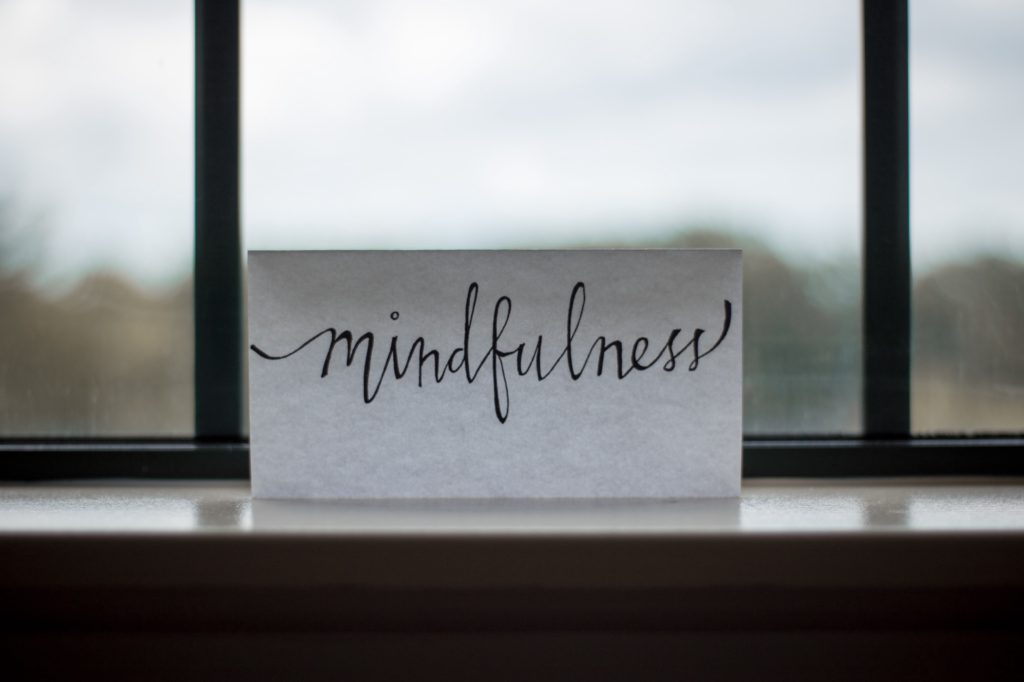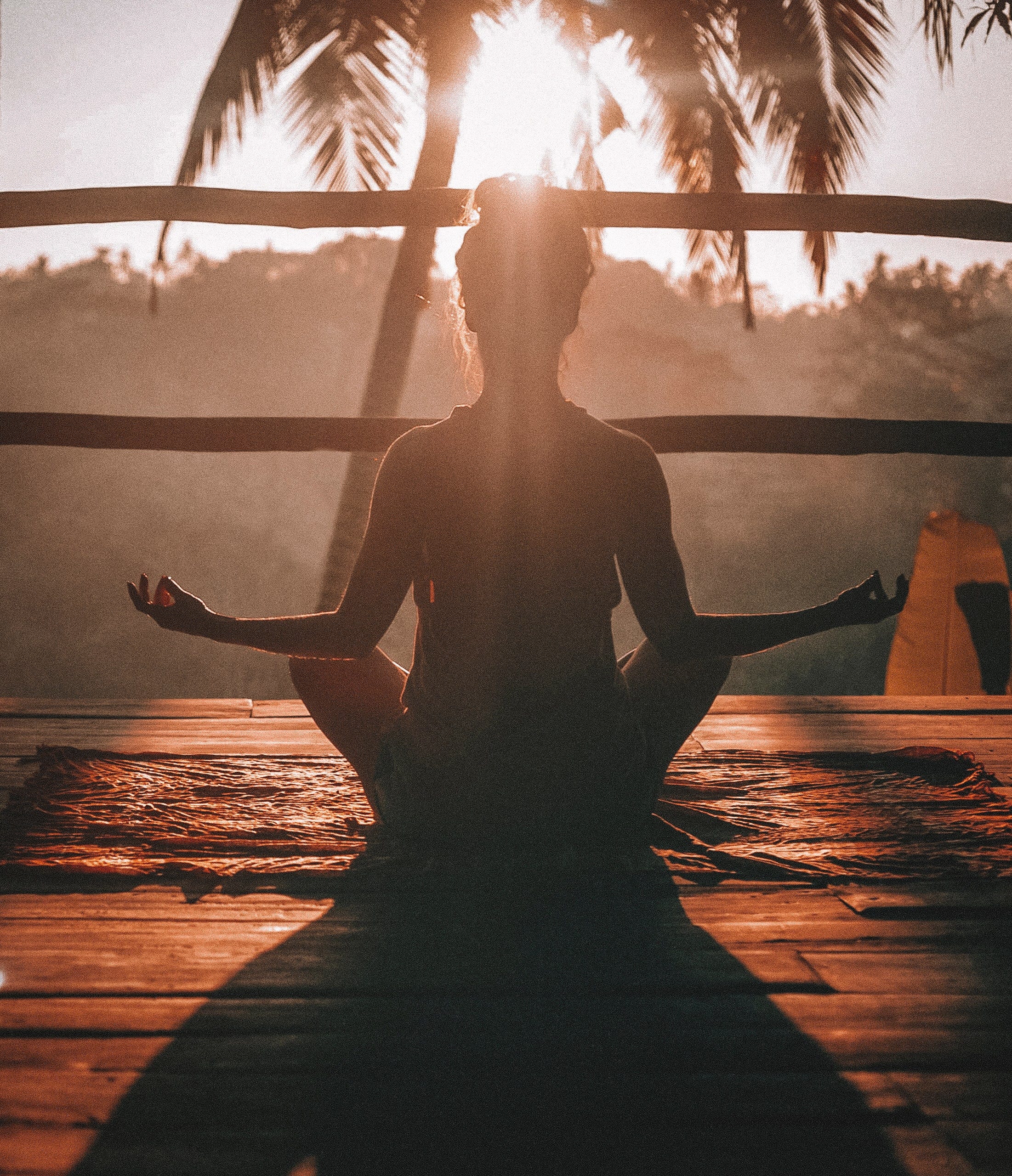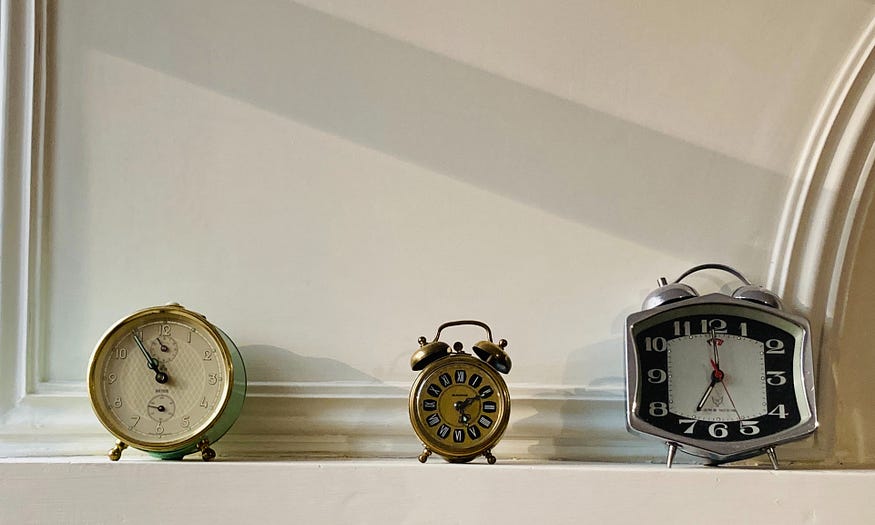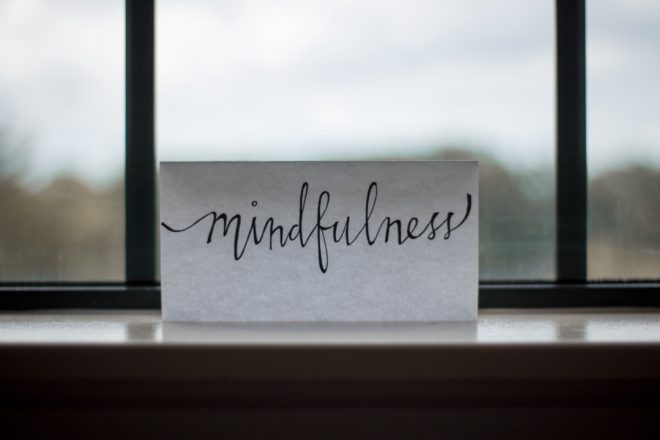Neliza Drew May 13 ·12 min read (originally published on Medium)

I have not baked a single loaf of bread in the past year. Somewhere I even have a bread machine. I tried offering it to the neighbor because she makes stuff from scratch. I think it’s under some of my mother’s plates that I don’t need, but I couldn’t figure out how to ship them to my niece without it costing more than a full set of dishes and the thrift shops closed last year at the start of the pandemic and between then and now I’ve thought of those dishes zero times. They’re in a room that has become a big of a garage despite the door looking like a human door instead of a car door. It’s currently full of car parts because Husband is restoring the Jeep.
I also have not built a model railroad, assembled anything LEGO, mastered a new language or a new instrument, but I found a new dry shampoo. I did not paint a masterpiece, write a memoir, or carve the Grand Canyon from butter. I did manage to keep current in my planner and journal. And I am wearing pants. I almost figured out eyeshadow. I did not run a marathon, but I managed to sprain both ankles on separate occasions, which led me to believe walking and hiking were better options for my clumsy ass.

I didn’t solve world hunger or homelessness or war, but I helped Husband vote while he was in ICU (it wasn’t Covid and for the record, he filled in all the bubbles but needed someone to drive it to the drop off). Now that I think about it, I probably need to fight DeSantis so next time someone’s in ICU they won’t have to miss an important election because the GOP hates voting by mail. Guess I could just leave that sentence at “the GOP hates voting” since they only like it when they get their way. I’ll add that DeSantis thing to my to-do list.
To-do lists have always been my enemy. I put too many things on them, get overwhelmed, do less than I could have done if I hadn’t gotten overwhelmed, and then freak out about how I didn’t get everything done. This process still happens at least once every two-three weeks, but it used to be daily, so that’s progress. A lot of ADHD people find Bullet Journaling helpful because those to-do lists aren’t necessarily tied to dates and you don’t have to keep rewriting them. I used to use Post-it notes and transfer from day to day instead but when the sticky stops sticking and there’s still things undone, it’s a bit shaming.
I also tried for many years the concept of “stuff to do this week” list and then just put the things that had to happen on certain days on those days (think appointments, due dates for bills, etc.). This sounds genius, but two problems showed themselves over time:
- ADHD’s dysfunction with getting tasks started looked a lot like procrastination where I’d keep thinking “I’ll do it tomorrow” until Sunday night and panic, overwhelm myself, and freak out. Then, I’d shame-cry as I rewrote the things for the next week and promised myself things would be different…until they weren’t and I just gave up. After a while, I got tired of rewriting undone things so I’m tell myself I would “just remember them” as if that was ever going to happen. Might as well tell myself I was going to “just grow wings” and take up flying to solve problem two.
- 2) The planner I was using (and this would include most Bullet Journal setups) didn’t have a schedule built in, so “2pm meeting” would register in my brain as “be at meeting at 2pm” without any of the steps necessary to actually be at said meeting. There was no “hey, stop hyperfocusing and brush your hair and find shoes and make sure your ID is in the purse you’re using (and you know where that is)” built in. Thus, I’d end up realizing it was time to be at the 2pm meeting when it was 2pm — but I’d still be at home frantically looking for a shoe.
Unfucking my ADHD
Enter: The Hobonichi Cousin(AKA The A5 for stationery nerds who deal in European paper sizes). With the Cousin, a timetable is built into every day of the weekly layout (including the weekend!) as well as every day of the daily section. So, the 2pm meeting becomes a time-block from 1–4pm if the meeting is 30 minutes or less away, longer if further. I can block out classes for each day so I can see how much of my schedule is free and I can block out time for anything else as well.
Now we need alarms! Time blocking alone doesn’t help, though, which is why I have all 50 alarm slots on my phone taken up. No, seriously, I keep recycling them and they aren’t all used at once, but having an alarm close to the time I need an alarm for helps so all I have to do is adjust it.

My main alarms:
- First one of the day about 15–30 minutes before my first “wake-up” alarm. I’m a very deep sleeper, especially in the early morning so this one is to rouse me. I always fall asleep after it, but it’s a lighter sleep so I’m less groggy when the “wake-up” alarms go off.
- There are 3 “wake-up” alarms spaced about 2–3 minutes apart. The first is a “you need to wake up now” alarm. The second is a “no, for real, quit scrolling or snoozing or snuggling and get up.” The third is a “GET THE FUCK UP!” After the second, I tend to move the phone further away.
- A 4-minute warning before my first class so if I’ve gotten distracted between getting up and getting into the office, I know I’m on borrowed time and I need to have my makeup on, pants on, shirt on, and be on my way to opening the laptop and changing the camera settings that never seem to save.
- An “are you dressed” alarm a half hour before the first of my next group of classes. The first set are for an ESL company and I tend to wear the same shirt every time so that it matches the company logo. For the other classes, I wear semi-professional teacher clothes. You know, blouses and dress yoga pants or t-shirts with nerdy teacher sayings with jeans and a blazer or a dress and nerdy jewelry. I also usually change my makeup from the garish look I use so my ESL students can see my features under the bright lights the company prefers. (Otherwise, I’m a white floating orb.)
- A “stop hyperfocusing or goofing off and switch gears” alarm ten minutes before the next batch of classes. I snooze this one so it goes off again five minutes before so I know if I’m not sitting in front of Zoom by then, I need to hustle.
- A lunch alarm at noon (on days that I don’t have a class that ends at noon).
- After lunch, there’s another (#4 and #5) to get me back in time for afternoon classes, especially if there’s a long enough gap for me to get focused or distracted.
- “Birds!” alarm. If I’m not facing a window, I sometimes have no idea when the sun starts sliding down the other side of the sky, so I have an alarm to remind me it’s time to get the ducks ready for bed (and the neighbors’ chickens if they are out of town). There’s a second bird alarm right before it gets dark if the hen is being reluctant to get back in the coop.
If I need to leave the house, I have an alarm a half hour before I need to leave that gets me unfocused and finding shoes. Another goes off fifteen minutes before I need to leave as a “if you haven’t found the damn shoes by now, wear different shoes” reminder. (It also works for “find a different purse” or whatever other rabbit hole I’ve gone down.) Five minutes before, an alarm basically goes off to ask “You’re ready, right?” and two minutes later another basically says “Get out of the house!
If you’re thinking this sounds excessive and ridiculous, congratulations, your brain keeps track of time better than mine. Hyperfocus has its benefits, but time-management isn’t one. Before the alarm system I had two choices: Stare at the clock until it’s time to do the next thing so I’m on time. OR Start doing something, lose track of time, and end up missing or being late to do the thing.
Planner to the Rescue: Back to the Hobonichi because while it can’t get up and remind me to do things, it has been helpful for corralling everything else.
- I keep to-do lists on the daily pages. If I find I’m rewriting the same one over and over, it’s time to re-evaluate the item. Is this something I really need to do or is there some reason I’m not doing it? What’s keeping me from doing this thing and if I don’t really need to do it (or don’t need to do it right now, stop writing it or add it to a daily page a few weeks or months away and see if it happens then).
- I use it for scheduling. As I mentioned, I block off times for meetings (including driving if that’s necessary), classes, appointments, and other activities that have a time component. I used to block off times for sleeping, too, but I’ve gotten into a more regular habit with that since I stopped working nights. It helps me figure out when to open new class times, when to start planning things for the next month or so, and when there’s something to work around. Having a whole week’s schedule laid out in front of me is hugely helpful (but drawing that every week would turn into an undone task) and the process of moving each week’s things to the daily pages helps get me mentally ready for the week.
- I use it for journaling. The bottom of every daily page holds a journal entry. Why? Because that’s the only way I seem to be able to maintain that habit and it lets me figure out when we did something, where we did something, or what we we did. It also helps with reflection and remembering those “good things” for when you.
- I use it for tracking, but not “habit tracking.” I tried the whole “habit tracking” thing. It was not for me. Your mileage may vary. I spent an entire day trying to decide which habits to track, how to label them in the planner, looking for stickers that might help, watching YouTube videos on habit tracking, and deciding on the perfect colors to code habits. And that lasted about three days. Instead, I use it for things like “words written today” and a sticker for the last time I bought hay or colored my hair or did my nails. I have a pair of stickers I use on the weekly spread where I track my steps for the week and my words for the week. Stickers are also great for things like “when did I last put flea meds on the cat???” because they’re visual and I can see in a glance rather than reading through my random notes.
- I use it for goals. Each month, I set up money goals, career goals, personal goals, and write them in little boxes on the monthly spread. At the end of the month, I can go back and see if I met any of them (I am overly ambitious) and if I need to adjust or update any of them. I also have a quarterly goal spread tagged with a fancy paperclip between the weekly and daily sections where I have goals for the year and each quarter I can see how I did. So far? I’m doing well with walking regularly but not so well with writing regularly.
- I use it for reminders. I have every birthday almost anyone I’ve met has told me about. (If I only know about it through FB, sorry, those aren’t in there.) They’re on the monthly spreads, on the weekly spreads, and on the daily pages. Why? So I don’t forget anymore. I have reminders set up to buy cards every two months for the next two months, reminders when to send cards (or gifts), and reminders to remind Husband to send things to his folks.
- I use it for sketching, photos, memory-keeping, and fun bits of decoration. By keeping it fun, I guarantee I’m more likely to pick it up, use it, look back to see what I’ve missed, and look ahead to stay on track. Does it ensure I’ve written a chapter in a novel instead of this essay? No. Did it make sure my father-in-law got a birthday card before his birthday? Yes. Does it have a cute watercolor of a bird we saw hiking? Yes. Does it have a record of where we saw the bird in case we want to go back? Yes.
- I use it for a vision board. Last year I taped in a vision board I did in Photoshop, but this year I just used vinyl stickers that felt important in some way. Of the ones I chose, so far a few things have “manifested.”
- I use it to hold my stash of stamps so if anyone in the house needs to send mail, I know where to look. It has a few other things for reference either tucked into the pockets of the cover or scribbled on the blank pages at the back.
Managing Depression is key. I left Depression initial capped for a reason. If you are having a blue day or the pandemic has you feeling down or out of sorts, that’s a form of depression and situational depression can make other things hard to manage. Severe depression, chronic depression, is sometimes harder to tame because you may not be able to think back to better times to help cheer yourself up. Depression lies and it lies well. ADHD can exacerbate Depression because ADHD is full of little “failures.” Didn’t get everything on an overly-ambitious to-do list done? Depression says it’s because you’re a terrible person who will never amount to anything and therefore you are a burden on those you love. Started a task and didn’t finish? Depression says it’s because you’re a failure and always will be. Forgot an important date or remembered at the last minute so you didn’t have time to plan the right gift or card or outing. Depression says you’re the reason other people are unhappy, that you don’t deserve to have friends and loved ones and you should be alone. Depression is an asshole.
So, keeping Depression from acting like your own personal internet troll is a key component to managing your ADHD in part because fighting one monster or wrangling one tiger at a time is way easier. Plus, building habits to set alarms and journal and all those other healthy habits (that are totally possible) are much more of an Everest-without-oxygen thing with Depression hanging out in your brain telling you lies.
If you have access to a therapist, doctor, or other person to help get Depression under control. Medication can be immensely helpful if you find the right. I think I tried them all before we worked our way back in time to an oldie-but-still-goodie.
Talking to a friend, venting into the ether, exercising, getting into nature… If you have something that alleviates symptoms, try it. None of those things really defeat Depression permanently, but they can definitely help if you don’t have access to a doctor, therapist, insurance, medication, etc.
Be nice to yourself. No, really. Sometimes, the best thing you can do to manage your ADHD is remember you have ADHD and that some days are going to be better or easier than others. Sometimes you will stare at a wall for three hours overwhelmed by a list you imposed on yourself. Other days you will hyperfocus for hours and accomplish so much you surprise yourself — until you realize you haven’t eaten all day. Some days you’ll pay the ADHD tax by forgetting a bill or balancing a budget wrong or not cancelling that subscription in time. Other days you’ll land a big client or put the laundry away and feel invincible.
I’ve found that when I forget something, overlook something, or get overwhelmed/unfocused/etc., telling myself it’s the ADHD instead of telling myself I’m a bad person helps. If something’s rooted in ADHD, maybe I can find a work-around. It might take a few tries, but trying feels better than just saying “well, I’m garbage” and moving. Trust me. I tried that last one for years.
Being nice is sometimes the hardest part, but when you’re nice to yourself you usually get more done, feel better, or at least gaslight Depression a bit.
